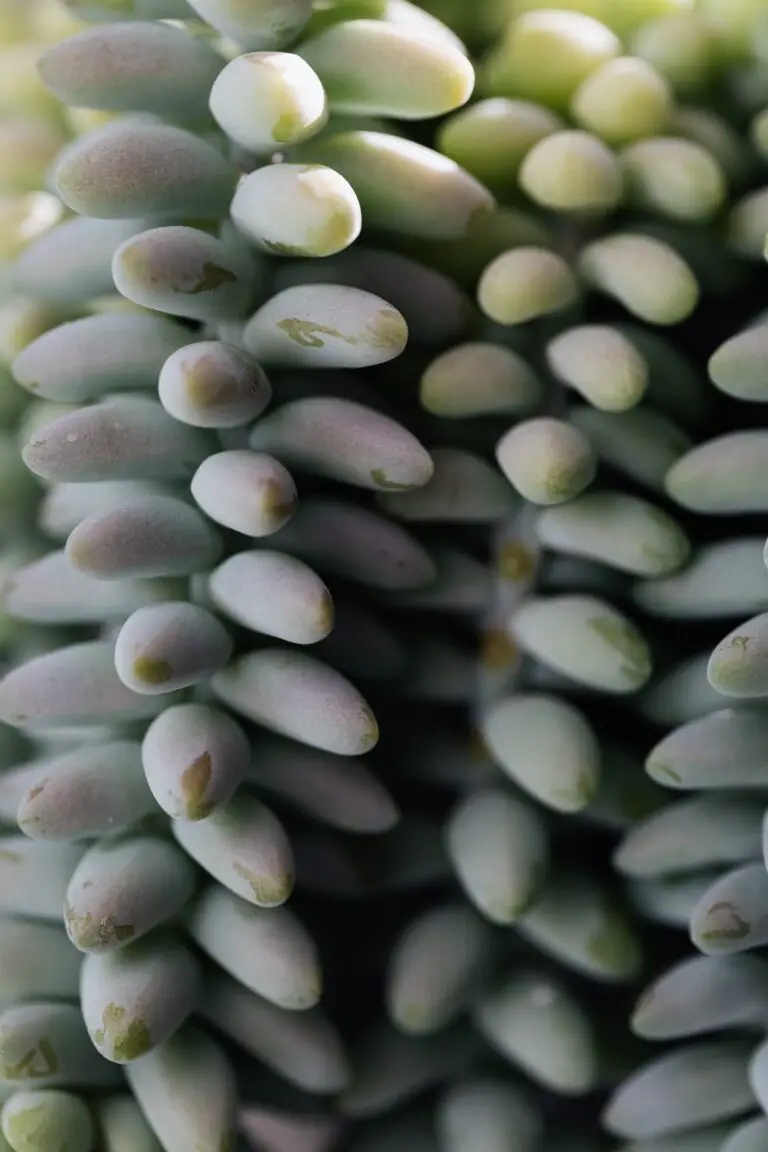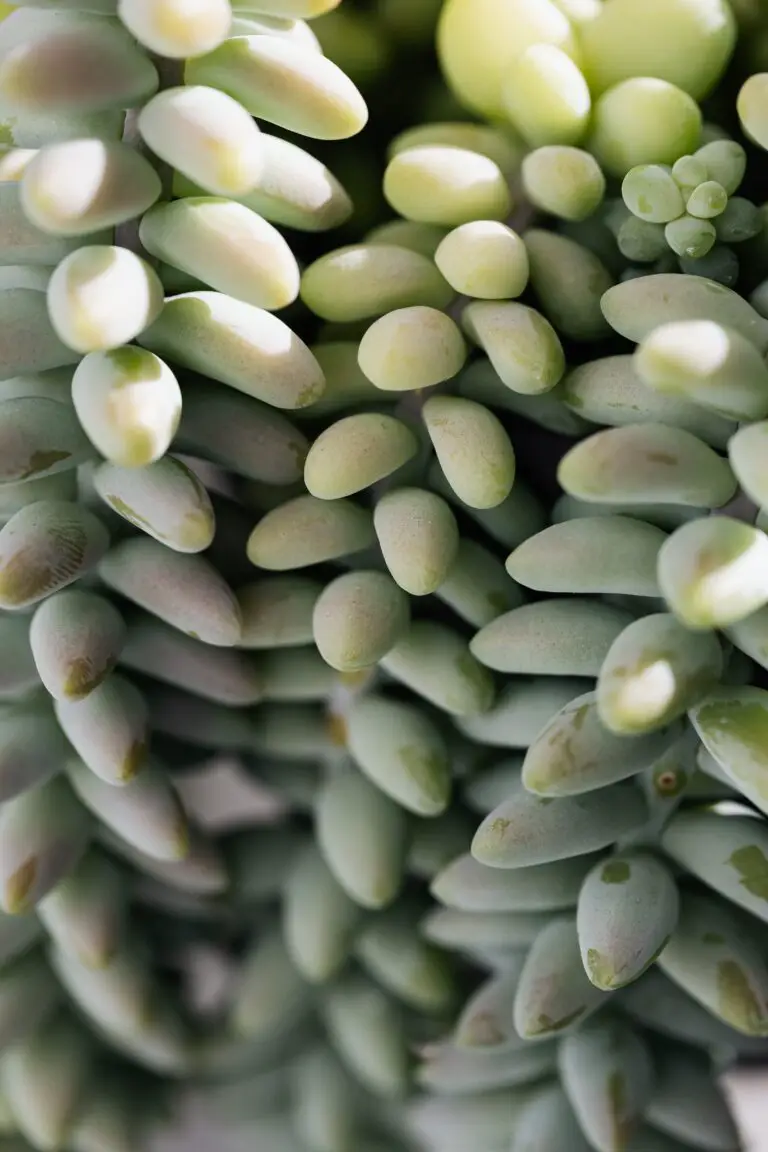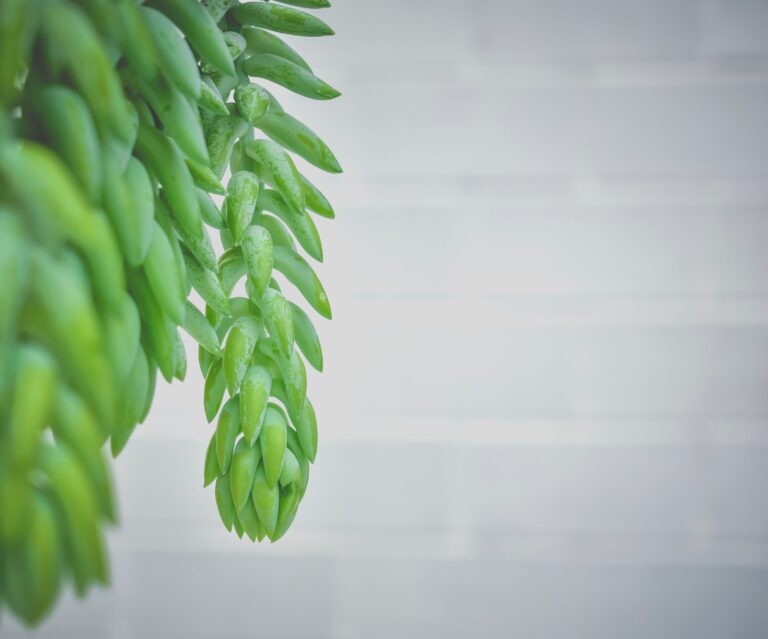Introduction to Sedum Division
Welcome to the vibrant world of sedums! You may know these robust, drought-tolerant plants as a gardener’s dream, but there’s more to them than meets the eye. Sedums, often celebrated for their ability to thrive with minimal fuss, are a fascinating genus of plants that bolster your garden’s resilience and charm. Now, let’s sprinkle some knowledge about the simple yet effective technique of dividing sedum plants during the summer months – a method that could significantly enhance the health and spread of your cherished succulent collection.
Imagine sedums as the tenants of your garden real estate, flourishing over time and eventually seeking new spaces to call home. This is where plant division steps in – it’s like playing matchmaker for your plants, giving them fresh soil to root in and new areas to colonize. For many gardeners, dividing sedums is a staple of plant propagation and a routine part of maintaining a lively and diverse garden ecosystem. It’s the botanical equivalent of reshuffling the deck, ensuring that every plant gets its moment in the sun.
While some might hesitate, pondering over the best season to divide these succulent beauties, others take the adventurous route and divide sedums in the heat of summer. But does this season hold the secret to successful sedum propagation? Let’s dive into the root of the matter and discover how you can divide sedums in the sultry summer without breaking into a sweat – metaphorically speaking, of course.
Let me paint a picture: your sedum, full and flowering, basks in the summer sun. It’s belting out a siren’s call to bees and butterflies, but beneath the surface, it’s cramped and crying out for space. Ah, that’s your cue! With a keen eye and a gentle hand, you can give your sedums the gift of freedom by dividing them. Not only does this rejuvenate your established plants, but it also multiplies your garden’s visual appeal – and without a single penny spent at the nursery!
Curious to see this in action? Let’s take a virtual class. Watch this insightful video to learn about the care and propagation of sedum plants:
For an enriching deep dive into this topic, you might also enjoy exploring the diverse varieties of sedums that can become the heroes of your eco-friendly garden. Each one comes with its unique playbook for thriving in various climates and conditions, making them incredible companions in your garden adventures.
There you have it – an inviting introduction to sedum division. As we journey through our gardening seasons, remember that the right techniques can transform your green space into a thriving sanctuary for these resilient plants. Stay tuned as we delve further into the specifics of dividing sedums in the tantalizingly warm embrace of summer in our next sections.
Understanding the Right Time for Sedum Division
Ever wondered if summer is the right season to wave a green thumb at your precious sedum plants and start dividing? Let’s talk timing and tease out when sedum is ripe for the splitting. Picture this: It’s like a garden version of slicing your favorite pie, but instead of dessert, you get more plants!
Sedum, a robust party of succulents, juggles a calendar full of growth cycles. To catch these green celebrities at the ideal division phase, one needs to tune into their life cycle jazz. Now, here’s the chorus line—early spring and late fall are the headlining acts for dividing sedum. Why those times? Well, that’s when your plants are well-rested or gearing up for some showtime minus the full heat of the spotlight.
But wait, why not summer? Hey, if you’re feeling gutsy, summer division can be done, but it’s like giving your plants an extra hurdle in the race. The soil’s as warm as your favorite cup of tea, sure, but your sedums are at full mast, flaunting their stuff. Cuttings may wilt under the summer sun’s encore performance, taking longer to bounce back. It’s a risky open-air theatre, but some gardeners love the gamble.
Seeking the wisdom of the crowd? Scope out the spreads on propagating sedum and see how fellow green thumbs pitch in their two cents on the matter. They’ve got the dirt on how to get those succulents multiplying.
Check out this snapshot—a sedum just begging to be divided, like bees to honey:

Remember, folks, dividing your sedum isn’t just about cloning your greens. It rejuvenates older plants, promoting better health and a snazzier garden ensemble. Your sedum will stand tall, wear its colors brighter, and maybe even send you a thank-you note for the roomier digs. So while summer sedum slicing is a roll of the dice, playing the calendar game smartly might just deal you a winning hand.
The Pros and Cons of Dividing Sedum in Summer
Dividing your sedum plants in the heat of summer might sound counterintuitive, but gardeners bold enough to give it a try can reap some surprising rewards—along with a few challenges. Let’s dig into the sun-drenched soil and uncover what makes summer division a hot topic among succulent enthusiasts.

When the sun is blazing, sedum, like most plants, is actively growing, which means it can be more resilient to division. Splitting these succulent beauties during their growth spurt can lead to quicker recovery and a faster establishment of new clusters. Picture this: it’s like giving your sedum a refreshing summer haircut, allowing it to bounce back fuller and more vibrant, ready to take on the heat.
However, summer division isn’t a walk in the park. The scorching temperatures can pose a real threat to the freshly divided sedum. Without sufficient water, the tender cuts can wither under the harsh rays. It’s like leaving a cold glass of lemonade out in the sun—it’s only a matter of time before the ice melts and the refreshment turns lukewarm. To prevent this, it’s crucial to keep the new divisions well-hydrated and monitored.
If you’re new to the game of propagating sedum, you might want to check out our comprehensive guide on Cultivating Vibrant Groundcover Gardens. It walks you through the steps needed to propagate these rugged beauties successfully, ensuring your garden remains a lush retreat year-round.
In short, summer division can be a bit of a gamble. With the right tools and a bit of tender love and care, you might find yourself with flourishing sedum offspring. But, without the proper precautions, your green-thumb efforts could succumb to the summer sizzle. So, weigh the pros and cons carefully before you decide to make the cut during the warmer months.
How to Divide Sedum: A Step-by-Step Guide
Are you staring at your flourishing sedum and wondering if summer is the right time to work your division magic? Well, put on your gardening gloves because we’re about to dive into the nitty-gritty of sedum division with a method as effective as a chef’s precise knife skills! Let’s get your garden’s star plants cloned in no time.
First things first, you’ll need your trusty spade, a sharp knife that means business, some well-draining potting soil, and a dash of that green thumb confidence. Imagine you’re a surgeon – the garden is your theater, and precision is key. Oh, and patience, because good things take time, right?

Step 1: Do the Groundwork
Before you start cutting, ensure that your sedum is well-hydrated; it’s like prepping an athlete before a race. Give your plants a generous drink the day before – think of it as a spa day for them. They’ll be more pliable and less shocked by the process. Our goal is a smooth transition, from thriving in the ground to acing the division.
Step 2: The Big Split
It’s showtime! With your spade in hand, approach the plant like a treasure you’re uncovering. Gently dig around the base, giving it enough berth as if you’re drawing an invisible circle. Once you’ve loosened the soil enough, it’s time to lift the entire plant out of its comfort zone.
Now, channel your inner Edward Scissorhands and use that sharp knife to divide the plant into new segments. Keep the visuals vivid – imagine you’re slicing through a cake, aiming for even portions so everyone gets a fair share. Ensure each new division has a good amount of roots and at least a couple of leafy friends to keep it company as it sets off on its solo journey.
Step 3: Plant with Purpose
Take your new sedum segments and treat them to their own plot of the garden, or perhaps a stylish pot. This is their new home, so make sure the soil feels like a comfy bed – fertile and cozy. Snuggle them in at the same depth they were growing before and give them a pep talk; a little encouragement goes a long way.
Finally, water them well, like you’re toasting to their new beginnings. Avoid the urge to fuss over them too much – just like kids, plants need space to flourish. With the correct post-care, including occasional watering and ensuring they aren’t smothered by weeds, you’ll soon have an extended sedum family that may just take over every available nook in your garden.
Remember, dividing your sedums isn’t just about propagation; it’s a story of renewal and growth. Each division symbolizes potential – little green nuggets of possibility. And by dividing in the summer, you’re giving these possibilities the warm embrace they need to root down and shoot up, heralding a lush, new chapter in your garden’s life.
Caring for Sedum Post-Division
You’ve successfully divided your sedum and now you’re looking at the disheveled offspring thinking, “Now what?” Don’t worry, the post-division care is like a nurturing nudge that encourages your green gems to settle in and shine. First things first, let’s give those roots a cozy hug with the right watering technique. Picture this: you’re sipping your favorite drink, quenching your thirst, but not drowning in it—well, that’s how your sedum feels about water. Moderate sips, not a deluge, folks. Keep the soil evenly moist, especially during the first few weeks. It’s like the Goldilocks of watering; just right.
Sunlight is to sedum like a good playlist is to a road trip, absolutely essential. These sun worshipers need a spot where the rays are generous but not scorching. Think bright, indirect light or a touch of morning sun with afternoon shade to prevent your freshly planted succulents from throwing a fit. And here’s a pro-tip: introduce them gradually to their new sunbathing spot to avoid a sunburn. Yes, plants can get sunburned too!
But wait, there’s more to this botanical ballet. Monitoring your sedum for signs of stress is akin to checking in on a friend after a big move. Does it look wilted? Are the leaves turning yellow? It’s telling you something! Stress can manifest in different ways, so keep a keen eye on your leafy pals and adjust care as needed. Perhaps they desire more shade or maybe they’re begging you to ease up on the watering can.
Want to dive deeper into the succulent’s post-division care? Check out this helpful guide for tips on keeping your garden’s new additions thriving.
Expert Video Guide
If you’re a visual learner and love to follow along, this video is your go-to guide for pampering your divided sedum. Grab your gloves and press play; it’s time to watch your garden flourish! And remember, patience and attention to detail are your best friends during this pivotal period.
Common Mistakes to Avoid When Dividing Sedum
Getting ready to multiply your sedums this summer? Great! But before you grab your gloves and trowel, let’s ensure you sidestep those pesky errors that could turn your sedum dividing session into a plant’s nightmare. We all want our gardens to thrive, not just survive, and knowing what not to do is half the battle won!
Going in Without a Game Plan
First up, never enter a sedum-slicing mission without a strategy. These sturdy succulents might look forgiving, but they have feelings too! A haphazard chop can lead to a slow heal and an open invitation to pests and diseases. Remember the tale of Suzie’s sedums? She went in guns blazing and ended up with more casualties than clones. The moral? Plan your cuts carefully to ensure each division has a fighting chance at life.
Ignoring the Timing
Though sedum has a tough-guy reputation, the sultry summer heat can stress even the hardiest of plants. Cutting up your sedum in the peak of summer is like running a marathon in a fur coat – not exactly ideal. Aim for a cooler part of the day, ideally in the evening when the plants have all night to recover from their surprise spa session.
Forgetting to Hydrate
Picture this: you’re at the beach, sun blazing down, and you’ve forgotten your water bottle. That’s how your sedum feels when you divide it without proper hydration. Water your sedum deeply a day before you plan to divide to ensure it’s not parched when you perform the big split. Trust me, your plants will thank you – if they could talk, that is.
Overlooking the Soil Situation
Don’t commit the crime of assuming any old spot will do for your new sedum offspring. Much like people, plants can be picky about their new neighbourhoods. These succulent beauties crave well-draining soil to avoid soggy feet, which can spell doom. Avoid the fate that befell Bob’s backyard botanicals by choosing a prime location and preparing the soil to perfection.
Now, take a moment to visualize your soon-to-be-divided sedum thriving and multiplying. Pretty satisfying thought, right? Keep these tips in mind, and you’ll soon be the talk of the town—or, at the very least, your garden will be. And to keep your green dreams growing, feast your eyes on this sedum in its full glory:

Remember, dividing sedum isn’t a race – it’s more like a graceful dance between gardener and plant. So stay cool, stay hydrated, and keep those cuts clean. With a little bit of know-how and a whole lot of love, your garden will be sedum-central before you know it. Happy planting!
Impact of Climate on Sedum Division
When it comes to splitting up your sedum, the buzzword is ‘climate’! That’s right, not all sedum division is created equal — your zip code can play a big role in whether you should dive into division during the scorching summer months. So, let’s unpack the climate conundrum and get your sedum thriving!
Imagine you’re a sedum plant basking in the mild summer sun of the Pacific Northwest. Here, dividing your lush, fleshy plants in July might be as leisurely as a Portlander’s stroll through a rose garden. The moderate temperatures and consistent moisture create ideal conditions for newly divided sedum to root and establish, without the stress of intense heat.

Now, swap that scene to the sweltering heat of Arizona’s desert. Here, summer can be a tough cookie for any plant, let alone a newly divided one. The scorching sun is like a relentless baking oven, and the mere thought of division could send your sedum into shock. If you’re keen on propagation, you might need to wait for a monsoon reprieve or stick to cooler seasons when the mercury takes a nosedive.
Still, there’s no need to throw in the trowel if you’re living in a hot climate. Some gardening gurus have honed their skills to pull off a midsummer divide. Their secret? Timing is everything – they’ll wait for a cloudy day or an evening when the sun’s taken a breather to give their sedum the gentlest transition possible. Add to that some extra TLC with shade, watering, and maybe even a prayer to the garden gods, and you’ve got a recipe for sedum success.
Whether you’re dealing with the misty breath of the coast or the dry gasp of inland heat, adjusting your sedum division schedule is crucial. Your green thumb and a little savvy about the local weather patterns will lead the way. Stick with this advice, and you’ll have sedum so sumptuous, neighbors will be lining up for a cutting!
Frequently Asked Questions
When it comes to gardening, timing is everything—especially with plants as forgiving as sedum. Gardening enthusiasts often ponder, “Can I divide sedum in the summer?” Let’s dig into this root of inquiry and unearth some insightful answers.
Is Summer Dividing Good for Sedum?
Imagine you’re sunbathing on a pleasant June afternoon; you’re soaking up just enough sun without hitting the peak heat. That’s the sweet spot, right? The same can be said for sedum. They tolerate division in the early summer, basking in the mild weather before the extreme heat hits. By dividing them during this period, you give them ample time to establish roots without the stress of sweltering temperatures.

Will Dividing Affect the Blooms?
Worried that dividing your sedum might steal away its blooming potential? Fear not! If you divide your sedum in early summer, you just might be rewarded with a fresh set of blooms. Think of it like pruning; sometimes a little trim encourages a plant to put more energy into flowering.
How Often Should Sedum Be Divided?
Your sedum is more adaptable than a chameleon on a disco ball—it can thrive under many conditions. But even the most flexible plant has its limits. To avoid overcrowding and to promote vigorous growth, consider dividing your sedum every 3 to 4 years. It’s like giving your plants their own spacious apartments; they’ll grow better without having to fight for every inch of soil.
Any Tips for a Successful Division?
Think of dividing sedum like hosting a dinner party: you want to prepare adequately. Ensure your gardening tools are clean and sharp, divide on a cool, overcast day to reduce transplant shock, and water thoroughly after dividing. With these best practices, your sedum will be more than just fine—they’ll flourish.
Now you’re well-equipped with the know-how to tackle sedum division in the summer. So, grab your gardening gloves and let the propagation party begin!



